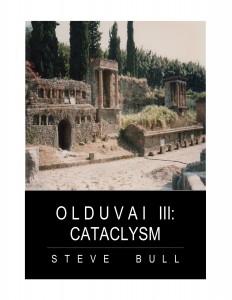Home » Posts tagged 'india'
Tag Archives: india
The Bulletin: May 1-7, 2025
The Bulletin: May 1-7, 2025 This past week’s articles of interest… If you’re new to my writing, check out this overview. A Key Longevity Antioxidant Is Fading From Our Food Supply The Limits of Business-as-Usual in AEO 2025 | Art Berman Complexity, Collapse, and the Lessons of Late Antiquity More Than 150 Nobel-Prize Winning Scientists […]
The Bulletin: April 24-30, 2025
The Bulletin: April 24-30, 2025 This past week’s articles of interest… If you’re new to my writing, check out this overview. Killing People by Lies: The New CO2 Campaign $10T Money Print! Fed’s New Plan Will Dwarf Bernanke Era | ZeroHedge The Wile E. Coyote Recession How I Unintentionally Became an Urban Farmer Banned DDT […]
July 1, 2024 Readings
Common Household Cleaning Product Found To Release Trillions of Microplastic Fibers Widespread floods in Bangladesh leave over 2 million people stranded – The Watchers Neo-Nazi Junta’s F-16s Flying From NATO Countries – Great Way to Start WW3 – Global Research Amazon Sparks Outrage with “Do Not Promote” Book Ban List Following Biden Admin Pressure Russia […]
‘Unliveable’: Delhi’s residents struggle to cope in record-breaking heat
‘Unliveable’: Delhi’s residents struggle to cope in record-breaking heat Temperatures of more than 45C have left population of 29 million exhausted – but the poorest suffer most As the water tanker drove into a crowded Delhi neighbourhood, a ruckus erupted. Dozens of residents ran frantically behind it, brandishing buckets, bottles and hoses, and jumped on […]
How Much Of India’s Wastewater Is Left Untreated?
How Much Of India’s Wastewater Is Left Untreated? As is the case with rapid population growth and urbanization in many so-called developing nations, waste management becomes a problem not only in rural areas but also in densely populated cities. As Statista’s Florian Zandt details below, a textbook example of this growth outpacing infrastructural capacities is the situation in […]
India set to face hotter heatwaves amid preparation gaps, says study
India set to face hotter heatwaves amid preparation gaps, says study The study advocates for the expansion of mandatory regulations alongside existing action plans to tackle the challenges posed by climate change Photo: Bloomberg As summer arrives, India braces for the onslaught of heatwaves, despite having substantial heat action plans in place. A recent study […]
I Saw the Future of Europe… In India
I Saw the Future of Europe… In India Photo by Mitchell Ng Liang an on Unsplash This is definitely not going to be an article what the title may suggest. At least not for those who still believe in the mainstream paradigm, according to which “everything can only get better with time”. This is also not going to […]
India’s most innovative cities including Bengaluru run out of water
India’s most innovative cities including Bengaluru run out of water Tech professionals are leaving India’s IT hub of Bengaluru amid an intensifying drought that has gripped the city as it sweats through another torrid pre-monsoon season A thirsty growth engine | Photo: Bloomberg At the time Egypt’s pyramids were being constructed, one of the cradles […]
India Produced Record Amounts Of Electricity From Coal In October
India Produced Record Amounts Of Electricity From Coal In October India produced a record amount of electricity from coal in October to make up for a shortfall in hydro generation following lower-than-normal monsoon rains. Coal remains fundamental to the country’s energy security, despite rapid deployment of wind and solar generation, underscoring the challenge of reducing […]
The Dieseleuro: Europe Is Guzzling Russian Oil In The Form Of Indian Diesel Imports
The Dieseleuro: Europe Is Guzzling Russian Oil In The Form Of Indian Diesel Imports As western politicians ever so theatrically pretend to sanction Russian oil imports (just so they can signal to their voters just how virtuous they are), especially now that the war in Ukraine is almost over with the US and Germany “pressing Kyiv to end […]
Xi, Putin Hail First BRICS Expansion In Over A Decade As Gulf Oil Powers Join
Xi, Putin Hail First BRICS Expansion In Over A Decade As Gulf Oil Powers Join At a moment China and Russia have envisioned the future of BRICS as fundamentally an anti-Western bloc of developing nations, the Gulf oil powers Saudi Arabia and the United Arab Emirates have been formally invited to become members, which marks the bloc’s first expansion […]
BRICS Nations Developing “New Currency” as Quest for Global De-Dollarization Accelerates
BRICS Nations Developing “New Currency” as Quest for Global De-Dollarization Accelerates China and Brazil recently finalized a trade deal in their own currencies completely bypassing the dollar, but that’s not the only bad news for the world’s reserve currency. Last week, a Russian official announced that the BRICS nations are working to develop a “new currency,” […]
War on Cash: India Rolling Out Retail Pilot Program for Digital Rupee
War on Cash: India Rolling Out Retail Pilot Program for Digital Rupee NOVEMBER 23, 2022 BY SCHIFFGOLD 0 1 We recently reported that the Federal Reserve plans to launch a 12-week pilot program in partnership with several large commercial banks to test the feasibility of a central bank digital currency (CBDC). The US isn’t alone in experimenting with digital […]



